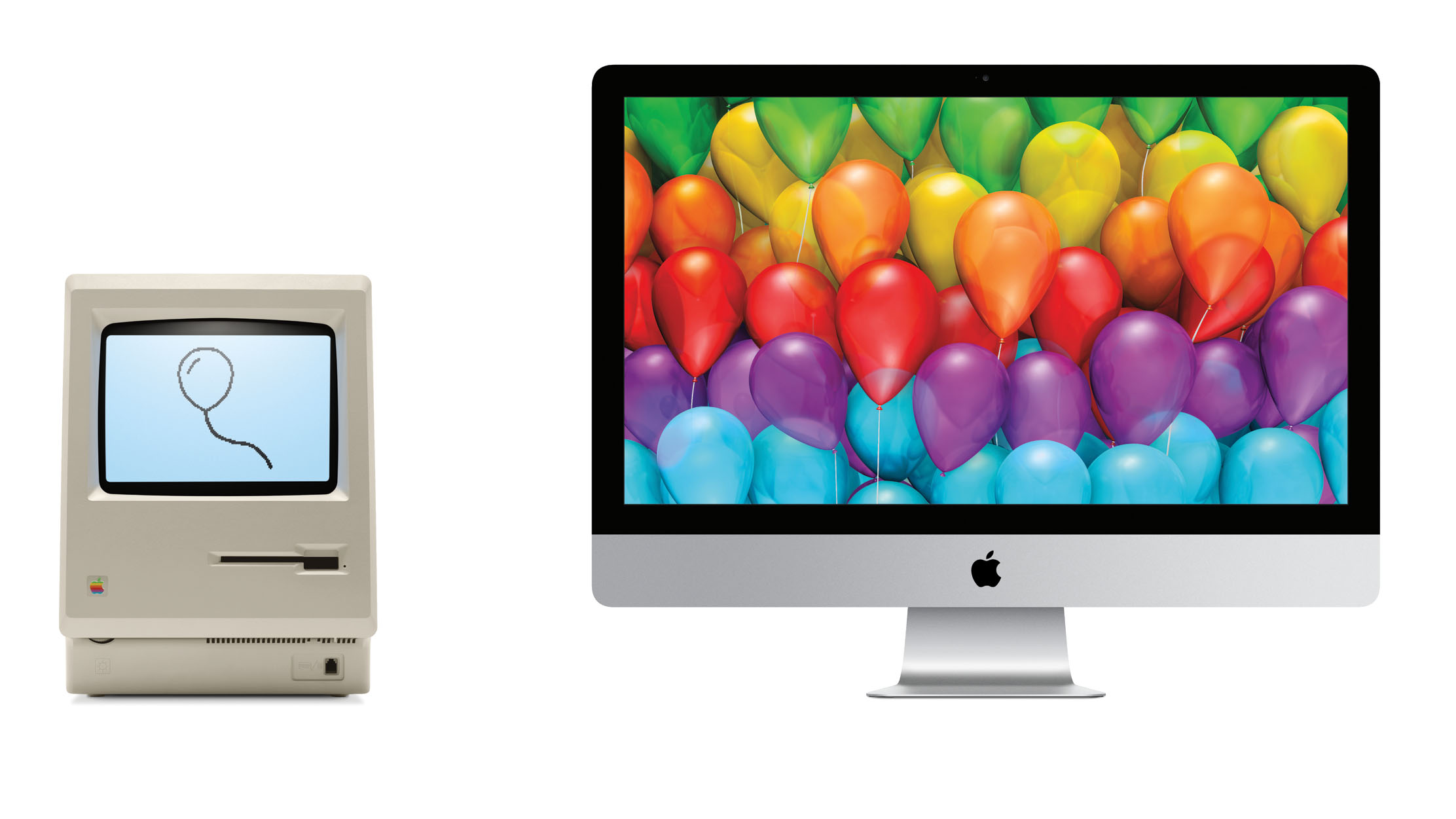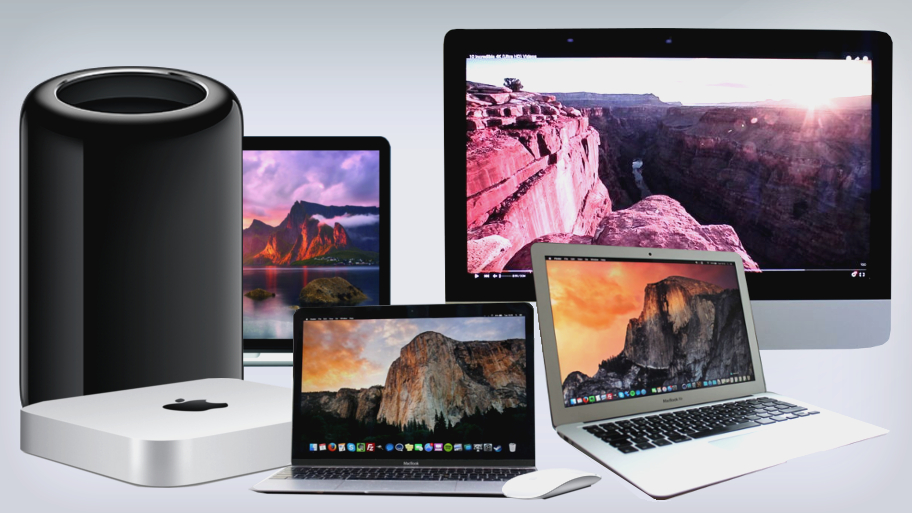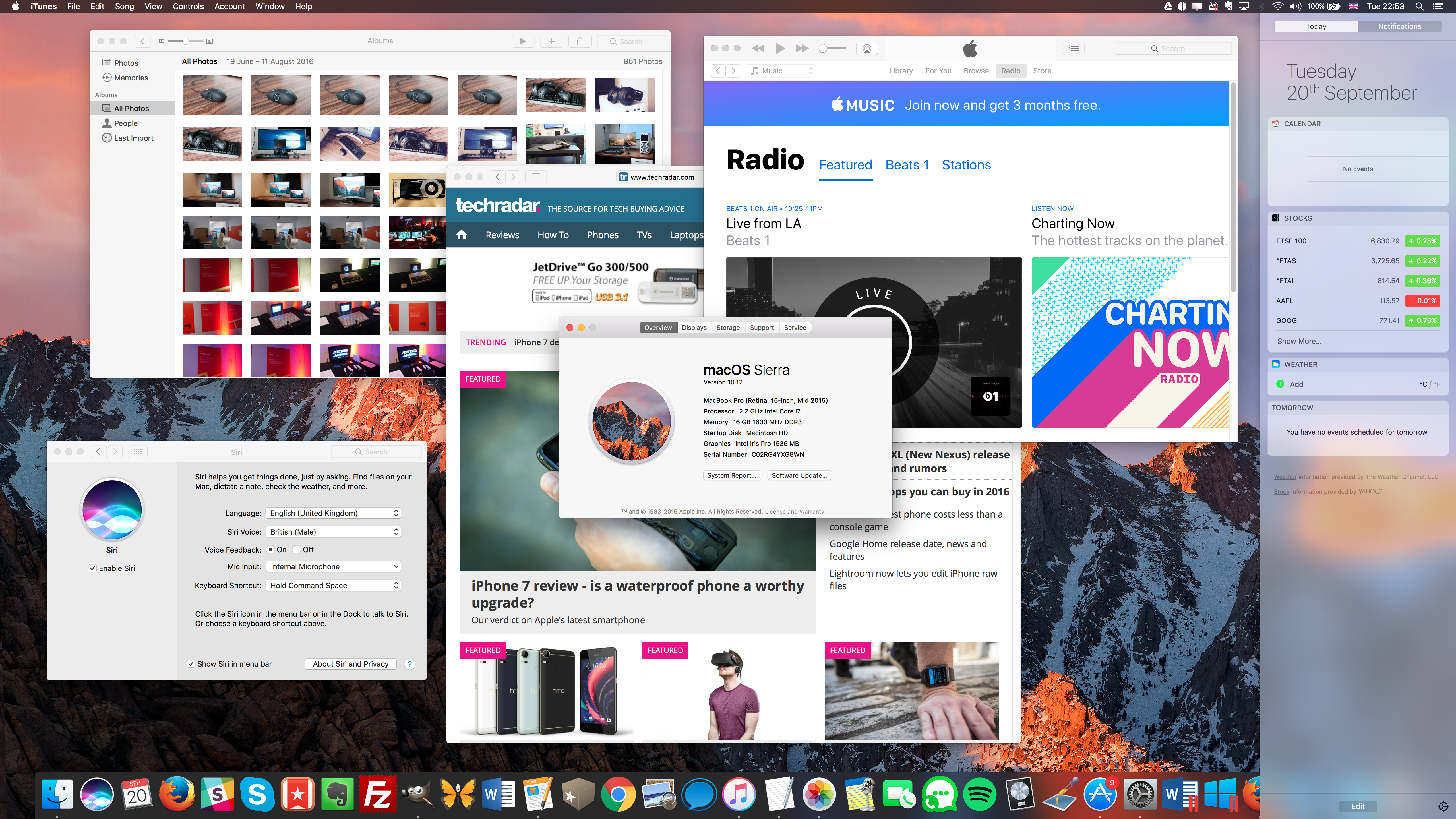The 'macOS' of 2016 vs the 'Mac OS' of 1984
This is just how far the Mac has come

September 20, 2016 marked the glorious return of Mac OS – err, sorry, "macOS" – at least by name, and with it a host of new features and capabilities for Apple's various Mac desktops and MacBooks.
This return to a name that Apple hasn't uttered much since 2012 has made us a bit nostalgic here at TechRadar for the "Mac OS" of old. (Because that's what aging tech nerds do.) This has made us wonder what the first Mac OS, then known simply as "System Software," would look like next to the macOS of today.
From the Mac hardware needed to run them to the innovative, new features they touted as must haves, let's look at the macOS of 2016 versus the Mac OS of 1984.
- These are the best laptops of 2016

Hot hardware
Since Apple doesn't release its software to other hardware makers, figuring out the exact hardware requirements for each version of Apple's operating system (OS) is a tad difficult (read: really hard). So, let's look at the original, 1984 Macintosh – today known commonly as the Macintosh 128K – to get an idea of what it took to run the firm's first crack at Mac OS.
The first-ever Mac OS (shown below) was comprised of 216 kilobytes (KB) of data (!), just over half of the original Macintosh's 400KB disk drive capacity (!!). In fact, the limited storage and memory saw users swapping floppy disks to access new content with the core OS runtime sitting on the 128KB of RAM (!!!).
And, powering the whole Mac OS platform, from handling data requests to pushing the monochrome, 512 x 342-pixel graphics, was an 8MHz Motorola 68000 processor. Yes, the same chip used to power the Sega Genesis.

Flash forward to today, and macOS Sierra requires a little more oomph to get your Mac going – just a smidge. The latest successor to what Mac OS started 32 years ago requires 2GB of RAM and at least 8.8GB of storage to run.
Sign up for breaking news, reviews, opinion, top tech deals, and more.
Let's put that into perspective. In terms of storage space, the size of macOS Sierra in gigabytes (GB) could fit roughly over 42,720 instances of Mac OS System 1 inside of it. If RAM behaved this way, you could fit thousands of instances of System 1 in the memory required by Sierra alone.
From founding Finder to a feature frenzy
The first Mac OS brought forth features and concepts in computing that the users of today's macOS have long taken for granted. For instance, System 1 introduced Finder, one of the first visual representations of a computer's stored files and programs since the DOS age.
Keep in mind, too, that the first version of Finder didn't even have a directory-based file system. All files were stored in the same root folder, regardless of how users organized them visually using the graphical interface.
In fact, it wasn't until the fifth version of Mac OS, or System 5, that Macs could run more than one application simultaneously – through a tool known then as "MultiFinder". At the time, it was all but a breakthrough.

Today, macOS Sierra not only represents files within tabs of a single Finder window – something likely not even a thought back in 1984 – but also summons forth those files with your voice, using Siri.
The latest Finder even automatically backs up your entire desktop and Documents folder to a remote server, iCloud Drive. It can even optimize your disk space based on how often and when you last accessed a collection of files, with your choice of either trashing them or sending them to iCloud Drive.
And, obviously, running more than one app at once hasn't required a specific tool devised to handle such multitasking for decades.
Where the Mac OS of yesteryear introduced woefully basic but absolutely fundamental concepts for computing (e.g. what if Sierra shipped without the Calculator app?), the macOS of today has more features than you can even remember to use, like Apple Watch proximity login.
While we look back and chuckle a bit at what Mac OS was compared to what it is today, the roots of Apple's more than 30-year-old breakthrough into visual computing are more than visible – they're integral to how we work on Macs. Just look at your Finder.
This article is part of TechRadar's Mac Week. This year marks not only the 10th anniversary of Apple's MacBook, but the triumphant return of macOS. So, TechRadar looks to celebrate with a week's worth of original features delving back into the Mac's past, predicting the Mac's future and exploring the Mac as it is today.

Joe Osborne is the Senior Technology Editor at Insider Inc. His role is to leads the technology coverage team for the Business Insider Shopping team, facilitating expert reviews, comprehensive buying guides, snap deals news and more. Previously, Joe was TechRadar's US computing editor, leading reviews of everything from gaming PCs to internal components and accessories. In his spare time, Joe is a renowned Dungeons and Dragons dungeon master – and arguably the nicest man in tech.